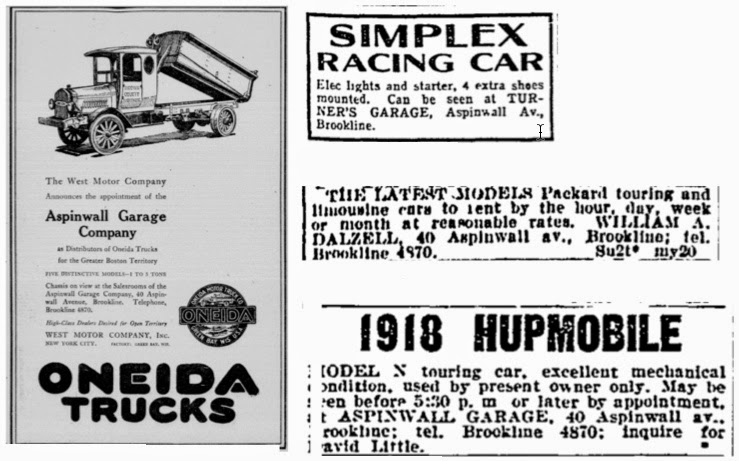 |
| Advertisement, Boston Globe, December 22, 1922 |
The Farquharson company opened for business in 1914 in a brand new building (still standing) at the northwest corner of Beacon and Centre Streets. William J. Farquharson had worked as a confectioner for more than 20 years at Page & Shaw and later at Bailey's, both on West Street in Boston. His factory and store took up about half of the building. Farquharson leased space at first and purchased the building in 1919.
 |
| The Farquharson Building at the corner of Beacon and Centre Streets (Image via Google Street View) |
The retail operation took up the corner spot, #1366 Beacon Street, now occupied by the Yasu Korean & Japanese restaurant Hamilton Restaurant & Bar. Additional stores were opened in Allston, Brighton, and Dorchester, with all of the candies made at the Brookline headquarters.
 |
| Advertisement, Boston Post, December 17, 1920 |
 |
| Classified ad, Boston Globe, October 2, 1919 |
The breaking through of the flames in the candy store presented a remarkable effect. It appeared as though the lighting system had been suddenly turned on. The artistic displays, the gay colored candy boxes and glass jars, trays of candy, little jazz dolls and other bright decorations stood out in bold relief as the flames whipped about them.
After the fire, the store presented an entirely different picture. The chocolates and other softer molds of candy were a melted mass, the firmer brands of candy alone withstanding the tremendous heat.
Farquharson's rebuilt after the fire, expanding the second floor of the building and adding about 50% more floor space to the store. Candy manufacturing was moved to Brighton although ice cream continued to be made on site. The Brookline Chronicle described the new interior after its reopening in July 1924:
The inside finish, including that of the booths, which are a new feature in this concern's stores, is of gumwood, and the walls are of cream-colored plaster of Georgian design. A most unusual and attractive tile floor has been laid, and the soda fountain has been doubled in size, providing plenty of room for the employees to carefully handle the wants of the customers. Leaded glass sliding windows protect the window displays, and most pleasing and restful prism chandeliers furnish the lighting effect. The ceiling is beamed and prism-effect mirrors are built into the walls behind the fountain.
The Brookline store was sold in 1929 to the St. Clair's chain of candy stores/soda fountains. Farquharson Candy continued to operate at its other locations for a few more years.
St. Clair's, which had had a store on Temple Place in Boston since the late 19th century, remained at 1366 Beacon Street until the late 1950s. Like Farquharson's, St. Clair's advertised its candies as an ideal gift at Christmas, as seen in the 1933 ad below.
 |
| Advertisement, Boston Globe, December 21, 1933 |
The Farquharson company continued to own the building, leasing space to St. Clair's and others, until 1951. William Farquharson died in 1955 at the age of 80.



















